Concept explainers
a)
Resolve shear stress acting on the
a)
Answer to Problem 53AAP
Resolve shear stress acting on the
Explanation of Solution
Write the expression for the Schmidt’s law:
Here, resolved shear stress is
Write the expression for the angle between two systems
Here, Directions of BCC crystal are
Conclusion:
Substitute 75 MPa for
Thus, the resolve shear stress acting on the (111)
Calculate the angle between the uniaxial force and normal to the slip plane system.
Write the expression for the angle between two systems
Here, Directions of BCC crystal are
Substitute 0 for
Calculate the angle between the axial forces and slip direction planes
Substitute 0 for
Calculate the resolved shear stress using equation (I).
Substitute 55 MPa for
Thus, the resolved shear stress is
b)
Resolve shear stress acting on the
b)
Answer to Problem 53AAP
Resolve shear stress acting on the
Explanation of Solution
Write the expression for the angle between two systems
Here, Directions of BCC crystal are
Conclusion:
Calculate the angle between the uniaxial force and normal to the slip planes.
Substitute 0 for
Substitute 55 MPa for
Thus, the resolved shear stress is zero , it indicates that this plane is shear less planes.
c)
Check the slip is occur or not in the two given system.
c)
Answer to Problem 53AAP
Slip is occurring in
Explanation of Solution
Refer the table 6.4,” Room-temperature slips systems and critical resolved shear stress for metal single crystals”, the
Want to see more full solutions like this?
Chapter 6 Solutions
Connect Access Card For Foundations Of Materials Science And Engineering
- Consider a single crystal oriented such that the slip direction and normal to the slip plane are at angles 42.7° and 48.3°, respectively, with the tensile axis. If the critical resolved shear stress is 27.1 MPa, what applied stress (in MPa) will be necessary to cause the single crystal to yield?arrow_forwardDetermine the critical resolved shear stress on a BCC single crystal if a normal stress of 10 MPa along [100] direction causes slip system on (110) plan along [1-11], one-bar one-one, direction.arrow_forwardIf we strain an FCC and an HCP single crystal, which of the two will have a larger amount of easy glide, and why?arrow_forward
- A single crystal of FCC metal is oriented so that the [001] direction is parallel to an applied stress of 5000 psi. Calculate the resolved shear stress on the (111) slip plane in the [1bar 10] and [01bar 1] slip directions.arrow_forwardMagnesium oxide is cubic (having the same structure as NaCl). The slip planes and directions are [110] and <110>, respectively. Along which directions, if any, can a tensile (or compressive) stress be applied without producing slip?arrow_forwardWill the stress required to INTRODUCE plastic deformation in a single crystal will be same as the polycrystalline material? Justify your answer.arrow_forward
- List and briefly describe the four major creep deformation mechanisms active in crystalline materials.arrow_forwardDescribe how you would determine the indices of given crystallographic directions.arrow_forwardA single crystal of an FCC metal is oriented so that the [001] direction is parallel to an applied stress of 5000 psi. Calculate the resolved shear stress acting on the (111) slip plane in the [-110], and [10-1] slip directions. Which slip system(s) will become active first?arrow_forward
- List which main slip systems are active in FCC, BCC, and HCP metals, and explain why those particular planes/ directions are favored.arrow_forwardA single-crystal rod of FCC nickel is oriented with the [001] direction parallel to the rod axis. a. Identify the type of slip system involved in the plastic flow of nickel. b. How many such slip systems are in a position to be activated at the same time when the load is applied parallel to this crystallographic direction? c. What is the Schmid factor for this slip system? (The angles between the {100} and {110} and {100} and {111} planes are 45 and 54.7°, respectively.)arrow_forwardCalculate resolved shear stress on the (111) [01̅1] slip system of a unit cell in an FCC nickel single crystal if a stress of 13.0 GPa is applied in the [001] direction of a unit cell. Draw the diagram for mentioned slip system.arrow_forward
 Elements Of ElectromagneticsMechanical EngineeringISBN:9780190698614Author:Sadiku, Matthew N. O.Publisher:Oxford University Press
Elements Of ElectromagneticsMechanical EngineeringISBN:9780190698614Author:Sadiku, Matthew N. O.Publisher:Oxford University Press Mechanics of Materials (10th Edition)Mechanical EngineeringISBN:9780134319650Author:Russell C. HibbelerPublisher:PEARSON
Mechanics of Materials (10th Edition)Mechanical EngineeringISBN:9780134319650Author:Russell C. HibbelerPublisher:PEARSON Thermodynamics: An Engineering ApproachMechanical EngineeringISBN:9781259822674Author:Yunus A. Cengel Dr., Michael A. BolesPublisher:McGraw-Hill Education
Thermodynamics: An Engineering ApproachMechanical EngineeringISBN:9781259822674Author:Yunus A. Cengel Dr., Michael A. BolesPublisher:McGraw-Hill Education Control Systems EngineeringMechanical EngineeringISBN:9781118170519Author:Norman S. NisePublisher:WILEY
Control Systems EngineeringMechanical EngineeringISBN:9781118170519Author:Norman S. NisePublisher:WILEY Mechanics of Materials (MindTap Course List)Mechanical EngineeringISBN:9781337093347Author:Barry J. Goodno, James M. GerePublisher:Cengage Learning
Mechanics of Materials (MindTap Course List)Mechanical EngineeringISBN:9781337093347Author:Barry J. Goodno, James M. GerePublisher:Cengage Learning Engineering Mechanics: StaticsMechanical EngineeringISBN:9781118807330Author:James L. Meriam, L. G. Kraige, J. N. BoltonPublisher:WILEY
Engineering Mechanics: StaticsMechanical EngineeringISBN:9781118807330Author:James L. Meriam, L. G. Kraige, J. N. BoltonPublisher:WILEY





